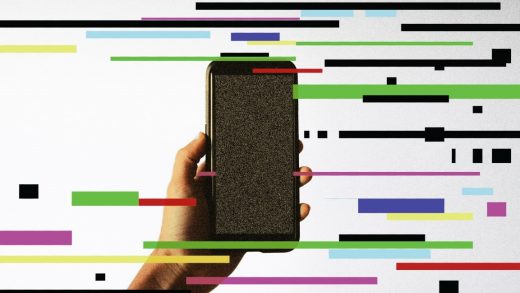5G’s rollout is confusing, uneven, and rife with problems
2020 looks like it will be your year to get 5G—but only in the sense of having that signal on your phone, not in the sense of knowing quite what it’s supposed to be or using it to its full potential.
A new report from the network analysis firm Opensignal advises that while this revamp of mobile broadband is poised to reach far more of the U.S., it will do so in ways that may leave both carriers and their customers feeling some wireless whiplash. The former won’t be able to provide it at the speed and over the coverage area they’d like; the latter will have to puzzle through wildly varying versions of 5G available to them that might not solve today’s hangups with streaming video.
The first caution indicator light in the report concerns wireless spectrum: U.S. carriers don’t have enough of the right kind for fast but far-reaching 5G. They have plenty of high-frequency, ultra-high-speed millimeter-wave spectrum that should yield a connection faster than many of us can get at home, but that covers so little ground that it won’t work outside of dense urban areas. The low-band frequencies they use today, meanwhile, won’t deliver much faster speeds; they’ll be 5G, but the downloads may feel more like 4.3G.
“It’s hard to deliver high speeds over low-band spectrum because you haven’t got as much capacity available in general,” explains Ian Fogg, lead analyst for the London-based firm, in a Zoom internet call on which he cut out once or twice. “What you can do is put 5G on frequency bands you couldn’t previously use”—meaning mid-band spectrum, the happy medium of 5G.
But in the U.S., most of those frequencies haven’t even been made available to carriers yet. The Federal Communications Commission is only starting to move toward auctioning this so-called C-band spectrum for 5G use.
The Opensignal report does predict that with the low-band 5G now being rolled out at scale by AT&T and T-Mobile on some of the same frequencies they use today to bring 4G countrywide, “5G will be almost everywhere” across the U.S. next year.
That’s also when you can expect to see carriers turning on “dynamic spectrum sharing” systems that will let them flip spectrum from 4G to 5G use as needed instead of walling it off for one or the other. The good news there: It should represent a free upgrade for people on 5G-enabled phones, since your phone will automatically switch to whichever network will work best. “The goal with DSS is that it’s transparent to the device,” Fogg says; if your 5G phone needs more bandwidth while 4G users near you no longer need as much, your carrier’s network will give that to you.
But it’s likely that confusion around 5G’s potential will persist. That’s because each of the four main carriers is rolling out different types of 5G. Verizon is touting millimeter-wave 5G that almost nobody can get, Sprint is selling a mid-band version that’s not as fast but is more widely available, and AT&T and T-Mobile are kicking off large- and larger-scale deployments of slower, low-band 5G. So what, exactly, is “5G” supposed to mean?
“That variability risks damaging perceptions of what 5G is to people outside the mobile industry,” Fogg says. “It’s going to hurt all the carriers, all of the vendors.”
The report notes that gamers will likely jump on millimeter-wave 5G for its combination of fast speeds and extremely low latency, essential to competing in action games online. But if they’re on the “wrong” kind of 5G, their connection’s responsiveness will decrease, and they’ll get smoked.
The Opensignal analysis calls out a related problem with online multimedia that you’d think 5G might solve but can’t yet in the States: streaming video that keeps buffering. The current situation ranks as gruesome in Opensignal’s estimation; its “State of Mobile Video” report gave the U.S. a score of 53.8 out of 100 in video experience, leaving it in 68th place worldwide after Kyrgyzstan.
The uneven availability of 5G speed and spectrum suggest that U.S. carriers won’t be able to lift their caps on the resolution of streaming video, their current attempt to keep video traffic from eating up all of their bandwidth. (At the same time, carriers keep throwing in streaming-media freebies as incentives to sign up for their higher-end packages, compounding their own problem.) Fogg says the only cure for this is for the carriers to pay for more spectrum as fast as the government can auction it off.
And even then, they’ll face difficult choices.
“It means you can support either more people watching the same quality of video, the same number of people watching higher quality video, or some combination,” he says. “How you as a carrier decide to package that up is a business decision.”
(27)



